Walking after decades on crutches — thanks to Ohio State hip replacement
Since she was 11, Joyce Amofah had lived with pain and disability from an uncommon hip condition.
Calloused hands and bruised elbows hint at the crutches Joyce Amofah used for nearly 30 years.
As she gets up from her seat, she has no crutches. She sits back down holding onto a chair. Up, then down, then up again. Ten times. Counting in her head, closing her eyes when she nears the end of the first set and feels the strain.
Then Amofah challenges herself. She gets up and down without holding onto a chair.
“There you go,” says Gabe Wittmann, PTA, CSCS.
He didn’t know she could do that.
When Amofah started physical therapy last winter, she took slow, careful steps with a walker. She wrote down her goal: I want to walk. I want to walk without crutches.
For the first time since she was 14, Amofah now walks without a walker, a wheelchair or crutches.
“My hands are free after all those years,” she says.
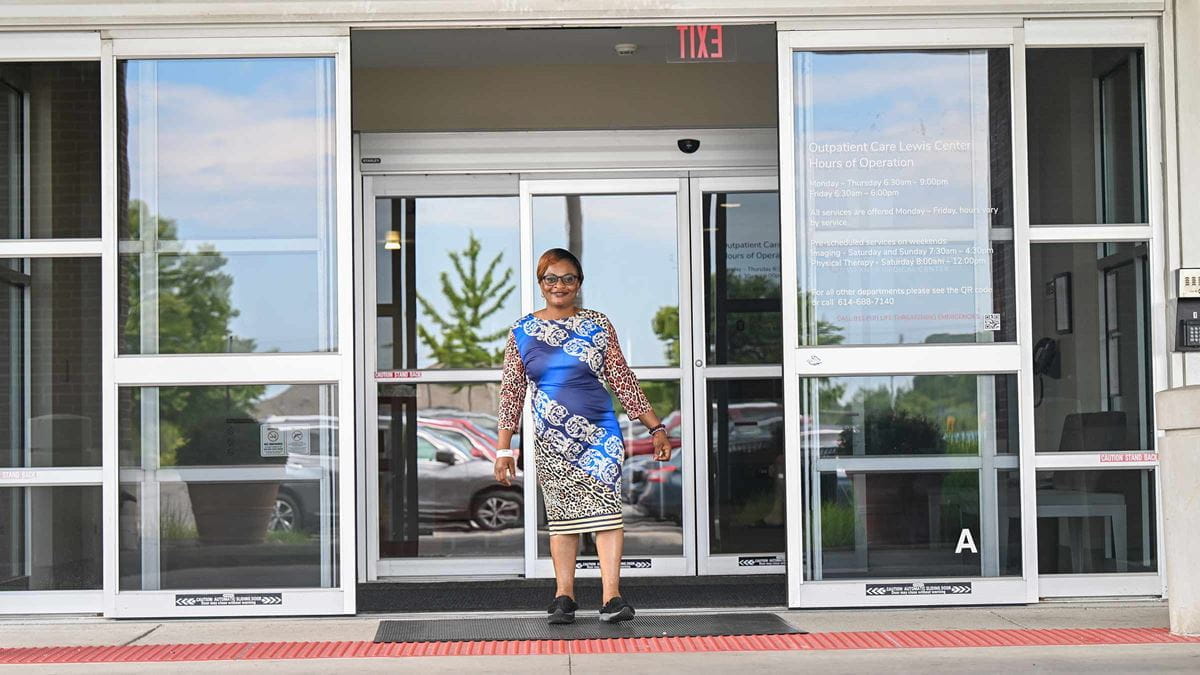
Last summer, Amofah’s left hip was replaced in a complex surgery to fix a problem she was born with that affected how her hips and legs grew. The surgery was done by Jeffrey Reeves, MD, and Andrew Glassman, MD, both orthopedic surgeons at The Ohio State University Wexner Medical Center.
Before the operation, crutches allowed her to walk but left her shoulders, elbows and palms of her hands in pain.
While walking, sometimes she’d have to stop suddenly until the pain dulled.
“Can you hold mommy’s crutches?” she’d ask her young children.
They’d hold them and wait for her.
From running to being in a wheelchair
Growing up in Ghana, Amofah darted across soccer fields just as quickly as the neighborhood boys. Then one morning when she was 11, she couldn’t move her legs to get out of bed.
For three years, she would be in a wheelchair. During most of her teenage years, she lived in a hospital in eastern Ghana, where she had five surgeries: Two on her right knee. Three on her left hip. After the last surgery, she could walk again but only with crutches, first two, then just one.
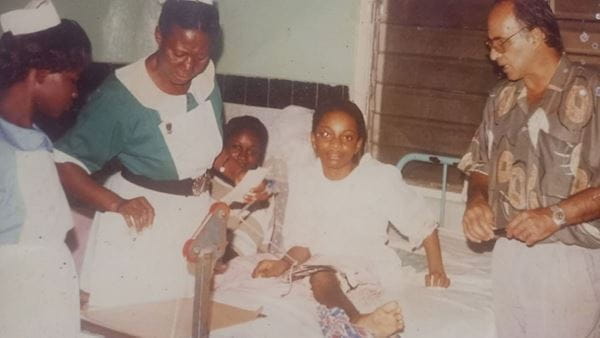
A mother of three, Amofah, 43, was born with hip dysplasia. Typically, the thigh bone, or femur, fits into the hip like a ball into a socket. But her left hip socket didn’t cover her femur. Over time, that caused her femur to slip out of place and make its own socket into the wrong bone a few inches above her left hip. There, with no soft tissue cushioning the movement between her left thigh bone and hip bone, bone scraped against bone whenever she walked. Even standing up hurt.
Newborns in the United States are tested for hip dysplasia. If they have it, they usually wear a brace for up to several months while their hips realign. At that time in Ghana, babies weren’t tested for hip dysplasia.
“When caught early, it’s a very correctable problem,” says Dr. Reeves, an assistant clinical professor of Orthopedics at The Ohio State University College of Medicine.
“When you get to this point,” he says, referring to CT scans of Amofah’s hips before surgery, “you’re left with few options to correct it.”
Years of living with hip and knee pain
Not only did Amofah’s left hip develop incorrectly, her right leg did also. That leg below the knee became permanently bent toward her right thigh. In her home country, a surgeon fused her right knee bone to the right thigh bone. At least then, her right leg would be extended and not permanently bent, so she could use it to help her walk. But she couldn’t bend that knee and had to drag her leg.
“I can’t imagine the pain she was living with every day trying to walk around,” Dr. Reeves says. “Clearly she’s a fighter.”
After her last surgery in Ghana when she was 17, Amofah assumed she would always walk with a crutch or two. In 2009, she moved to the Columbus area from Ghana with plans to go to college here and then work. Several doctors in the Columbus area suggested she see an orthopedic doctor to find out if they could improve her condition. She wasn’t interested.
“My mind was locked up,” she says. “I thought I was going to live my life like that.”
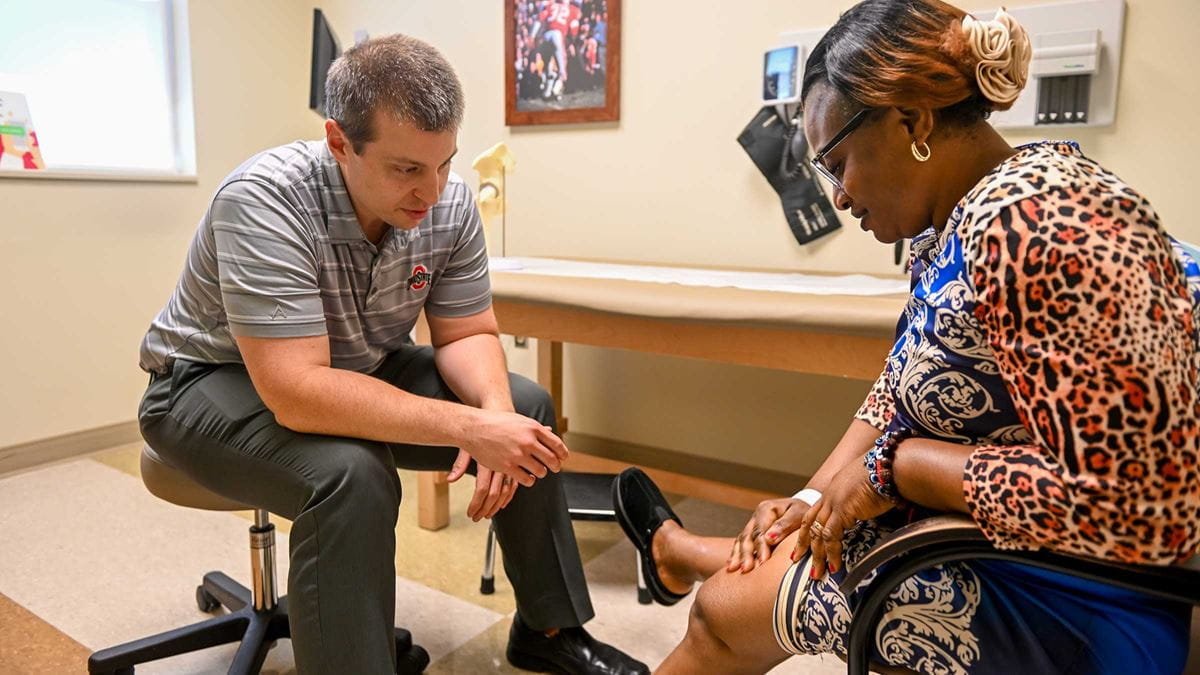
Seeing surgery as a solution
So it was by chance that in 2023 Amofah hobbled into the office of an orthopedic doctor at The Ohio State University Wexner Medical Center. She needed a new crutch. Her insurance company would only consider covering it after an orthopedic doctor did an exam first. After a CT scan, the doctor said what other doctors had recommended years earlier, what her husband had urged: another surgery.
“I’m done with surgeries,” she told the doctor. “I thought another surgery would make me worse.”
But the doctor showed her the scans. If she didn’t have her hip replaced, she would eventually be unable to walk — even with crutches, he told her.
Amofah was 42 at the time. She couldn’t imagine herself in a wheelchair, maybe even before she turned 50. She set up an appointment with Dr. Reeves.
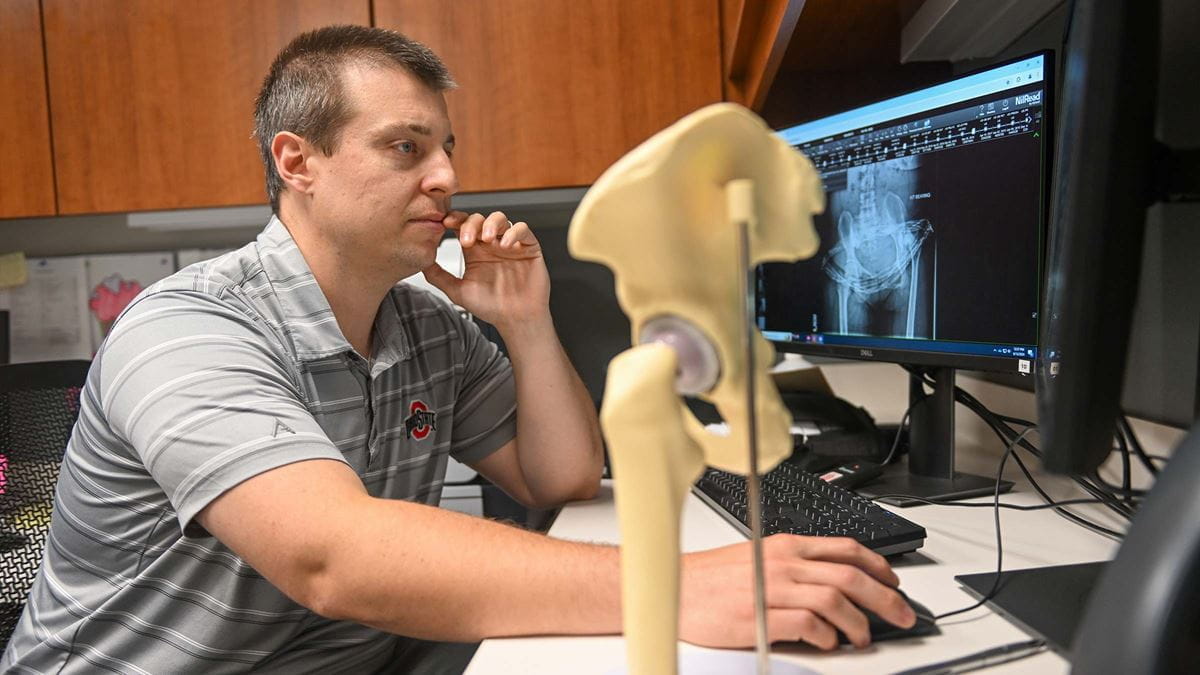
Not a standard hip surgery
Looking at the CT scans of Amofah’s hips, Dr. Reeves knew it would be a complex surgery, the most complex he had done. In the hundreds of hip replacement surgeries he has performed, he never reconstructed a hip on someone with congenital dysplasia as severe as Amofah’s.
That degree of congenital dysplasia affects only about 1% of people nationally.
In her hip replacement surgery, the damaged parts of her left hip joint needed to be replaced, and her left hip was much smaller than the right.
“So not only does she have a challenging problem, the bone we have to work with is very small,” Dr. Reeves says.
When he talked to Amofah about the surgery, she wanted to know if she’d be able to walk after recovering from the surgery.
Dr. Reeves couldn’t guarantee it. But he said surgery would likely mean she’d have less pain.
“I told her ‘We’re pretty certain we can make things better.’”
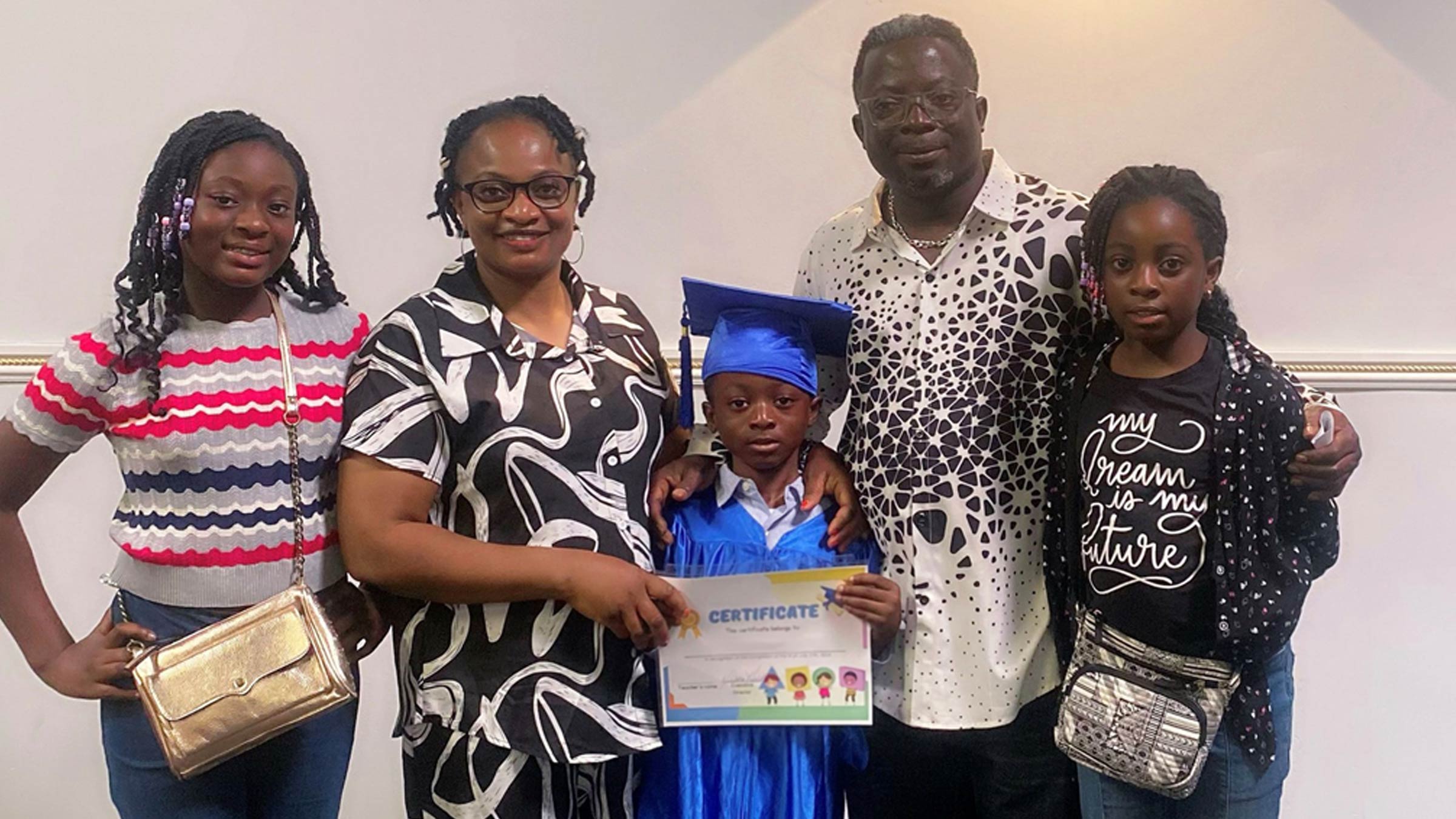
On June 21, 2023, Dr. Reeves and Dr. Glassman rebuilt Amofah’s left hip using screws, titanium, ceramic and polyethylene, a type of plastic. The surgery took five hours, about five times longer than an operation for a standard hip replacement.
Even though Dr. Glassman, the Frank J. Kloenne Endowed Chair of Orthopaedics, has done numerous surgeries on people with hip dysplasia, this one came with several challenges.
“The bone structure of her hip was markedly abnormal. We had to create a hip socket using bone grafted from the top of her thigh bone,” Dr. Glassman says.
Walking again
In the winter of 2023, just four months after the surgery, Amofah arrived in Dr. Reeves’ office without a wheelchair, without a walker, without crutches. It was the first time he’d seen her walk.
“I hugged him three times,” she says.
It was a gratifying moment for Dr. Reeves. It’s why he does his job, why he went into medicine, his interest sparked by a shoulder surgery that allowed him to go back to playing high school football.
“That’s what you hope to deliver to your patients,” he says. “The tangible outward sign that you helped this person, that you’ve given them a piece of their life back.”
Now Amofah can play more with her children rather than sit on the couch while they play around her. She can get dressed more easily. She’s not constantly hurting.

“I’d been living in pain most of my life,” she says.
With another surgery likely this fall, she expects that will make it even easier for her to walk. Regardless, she’ll always have to drag her right leg, which is permanently straight from the earlier fusion surgery. Still, that doesn’t bother her.
“I can’t run,” she says, “but I can walk.”
And Amofah can stand up straight now, no longer bent to one side. Her hands no longer lean into crutches.

Ready to stop the pain?
Schedule an appointment with one of our orthopedic experts.
Get started



